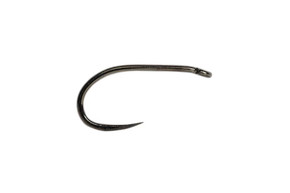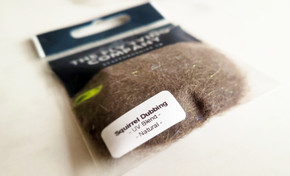Introduction
When most anglers think about fly fishing, their minds turn to delicate feathers, silken threads, and the elegant cast of a well-tied fly. Rarely do we pause to think about the one component that makes the sport possible: the hook. Without it, even the most beautifully dressed fly would be little more than decoration.
In the story of British angling, hooks are more than just bits of sharpened steel. They represent centuries of craftsmanship, industrial ingenuity, and a thriving export trade that once put Britain, particularly Redditch in Worcestershire, at the centre of the world’s fishing tackle industry. From the early days of hand-forged hooks to the mass-produced patterns that supplied generations of fly fishers, British hook makers played a vital role in shaping the sport.
At Fly Tying Company, we know that hooks are the backbone of every pattern. In this article we celebrate the legacy of British hook makers, the craftsmen whose work shaped fly fishing as we know it.
The Origins of Hook Making in Britain
From Blacksmiths to Specialists
The earliest fishing hooks used in Britain were hand-forged by blacksmiths. They were often heavy, uneven, and prone to breaking, but they served their purpose for coarse fishing and early salmon angling. By the late 18th century the demand for finer, more reliable hooks was growing.
The Midlands, already a hub for metalworking, began to specialise. Skilled wire drawers and small workshops in Birmingham and Redditch started producing hooks in large numbers. These artisans combined blacksmithing techniques with new methods of tempering and shaping drawn steel wire, producing hooks that were lighter, sharper, and more consistent.
Why Redditch?
- Skilled labour — generations of metalworkers lived in the area
- Materials — high-quality steel wire was readily available
- Transport — canals, and later railways, allowed easy distribution across Britain and for export
- Clustering effect — as more hook makers set up shop, ancillary trades grew around them, from packaging tins to sharpening tools
By the mid-19th century Redditch wasn’t just a British hub, it was the global capital of hook making.
The Golden Age of British Hook Makers
Allcock & Co. (Redditch, founded 1803)
One of the oldest and largest fishing tackle houses in the world, Allcock was a powerhouse of the hook trade. Their catalogues listed every imaginable pattern for coarse, sea, and fly fishing. Allcock’s export trade was enormous, supplying hooks across the British Empire, to America, and beyond.
Partridge of Redditch
Perhaps the most famous name among British hook makers, Partridge was established in the early 19th century and earned a reputation for precision and reliability. Their salmon and trout hooks were revered, with patterns like the Captain Hamilton eyed hook becoming iconic. Today, Partridge is still associated with premium fly hooks, the last great survivor of Redditch.
Milward’s (Henry Milward & Sons)
Originally a needle maker, Milward’s diversified into hooks in the 19th century. With its roots in the 1730s, the company became one of Redditch’s biggest exporters. Their hooks were shipped worldwide, from India to Africa to the United States.
Bartleet & Harrison
Bartleet was one of the oldest names in hook making, with origins in the 18th century. Together with Harrison, they produced strong hand-forged hooks long before mechanisation. Salmon anglers particularly prized Bartleet hooks, and tins bearing the Bartleet name are now highly collectible.
Wright & Son
Another respected Redditch firm, Wright & Son produced fine-wire trout hooks known for their temper and consistency. Professional fly tiers often relied on their products for delicate patterns.
Other Important Names
- Wright & McGill (UK branch) — connected later to the Eagle Claw brand, but with Redditch origins supplying export markets
- S. & E. Allcock — related to the larger Allcock brand, produced bulk hooks for wholesale and trade use
- Bates & Son — mid-19th century makers of general angling hooks
- Sutcliffe (P. & M. Sutcliffe) — a smaller family firm, producing hooks for both coarse and fly fishing
- Bartlett, Smith, and others — numerous small workshops whose names may be little known today, but who contributed to Redditch’s dominance
Shakespeare (UK arm)
Though better known for rods and reels, Shakespeare’s British branch marketed hooks sourced from Redditch makers, often under its own branding.
Innovation for Fly Fishers
The Shift to Eyed Hooks
For much of the 19th century hooks were made with a short length of gut tied directly to the shank. Flies were whipped onto these “gut-eyed” hooks by professional tiers. Eyed hooks, with a loop at the top of the shank, were gradually adopted in the late 1800s.
British hook makers were instrumental in this shift, producing eyed hooks that allowed anglers to tie their own flies and change leaders easily. This innovation revolutionised fly tying and democratised the sport.
Specialised Patterns
- Limerick bend — wide and strong, ideal for salmon
- Sproat bend — versatile, popular for trout flies
- Long shanks — perfect for sedge patterns or stillwater lures
This specialisation reflected the close relationship between hook makers, tackle houses, and professional tiers.
Redditch: The World’s Hook Capital
By the Victorian period Redditch was producing around 90% of the world’s fishing hooks. Its factories and workshops supplied everyone from aristocratic salmon anglers to working-class coarse fishermen. Catalogues from the period listed hundreds of variations, each designed for a particular style or species.
The town became known internationally. Angling shops from New York to Calcutta stocked Redditch-made hooks. A trade directory of the 1870s even described Redditch as the workshop of the angling world.
The Decline
The 20th century brought new pressures. Norwegian giant Mustad rose to prominence, producing hooks at scale with lower labour costs. After the Second World War, Japanese firms such as Gamakatsu and Owner entered the market with high-quality alternatives.
British labour costs made it difficult for Redditch makers to compete. One by one, firms closed or were absorbed. Allcock eventually disappeared, Milward’s merged into larger conglomerates, and only a few names like Partridge survived, often under new ownership.
By the late 20th century large-scale hook making in Redditch was largely gone.
Collecting and Legacy
Why Collect Vintage Hooks?
- Durability — many remain sharp and usable even after decades
- Packaging appeal — tins, packets, and advertising labels are highly collectible
- Connection to heritage — fishing with, or simply owning, Redditch hooks feels like holding a piece of angling history
Notable Collectible Brands
- Allcock tins, often with colourful Victorian printing
- Partridge packets, stamped with model numbers
- Bartleet salmon hooks, especially early gut-eyed versions
- Milward’s boxes, reflecting the scale of their export trade
Timeline of British Hook Makers
Timeline of British Hook Makers
Conclusion
The story of British hook makers is inseparable from the story of fly fishing itself. From the workshops of Redditch came the hooks that tied together the flies of Victorian anglers, the salmon patterns of Edwardian ghillies, and the stillwater lures of post-war trout fishers.
Though most of the industry has moved abroad, the legacy of British hook makers remains in the names we still respect, the hooks we still collect, and the heritage that lives on every time a fly is tied.
At The Fly Tying Company, we believe that remembering this history makes tying and fishing more meaningful. Next time you thread a leader through the eye of a hook, take a moment to think about the generations of British craftsmen who perfected it — and know that today’s hooks still carry forward that legacy.












